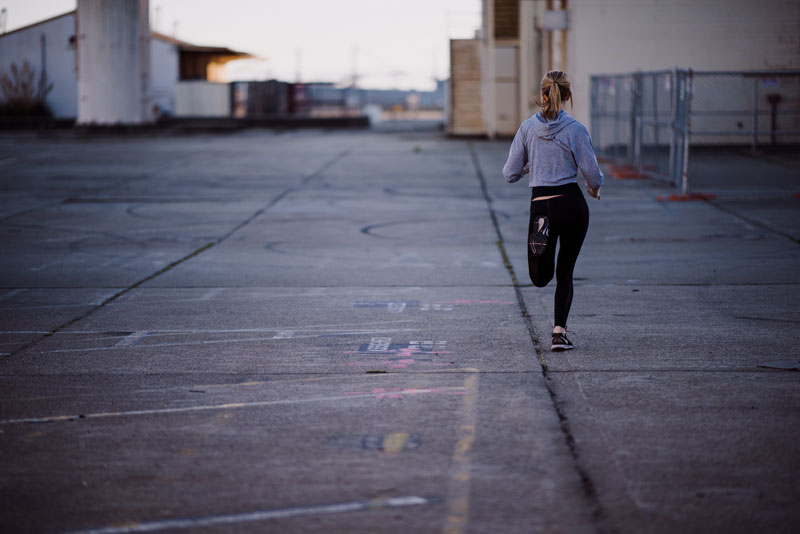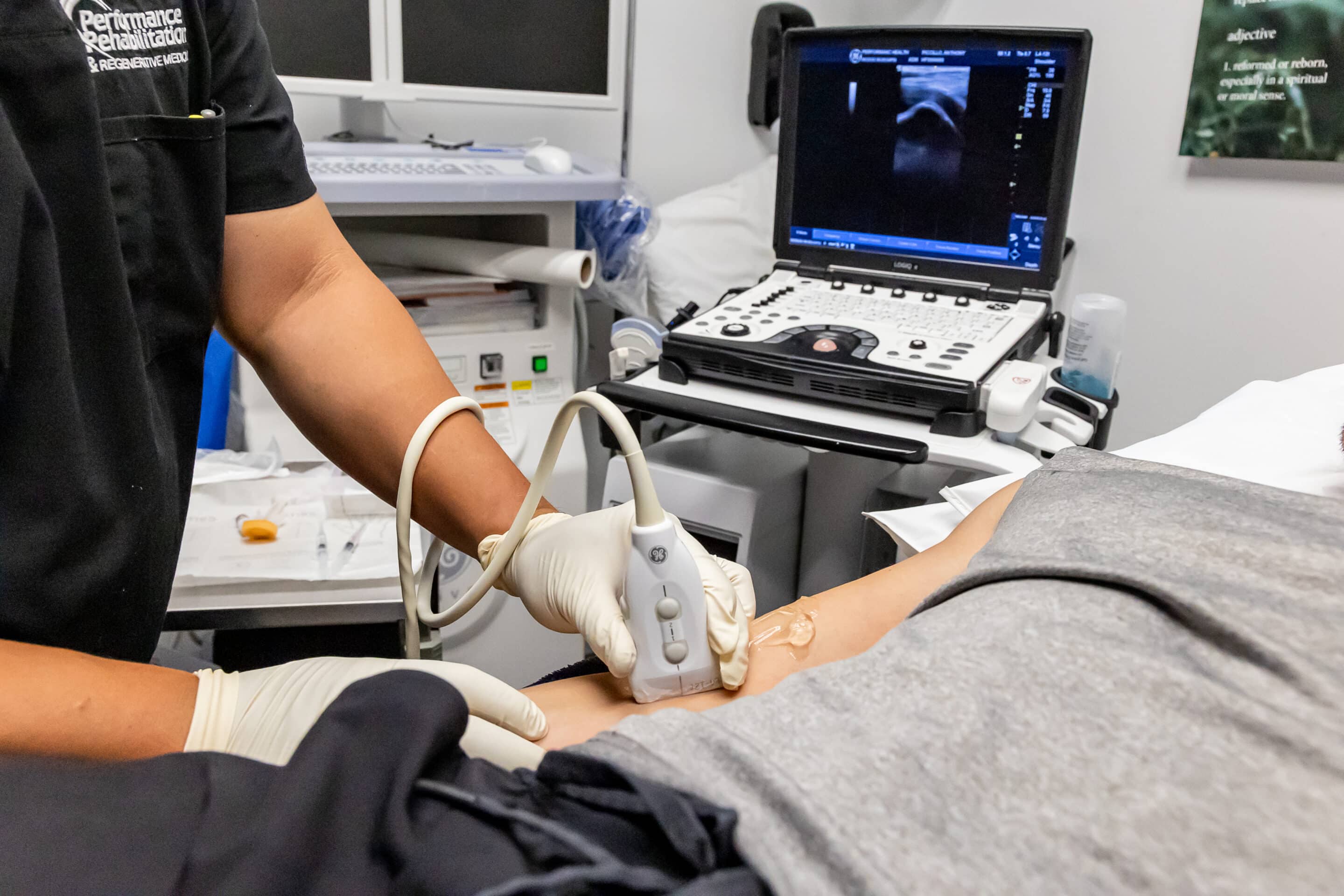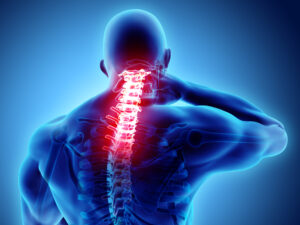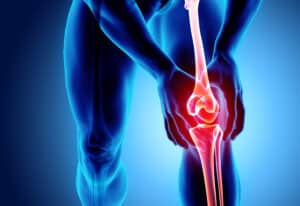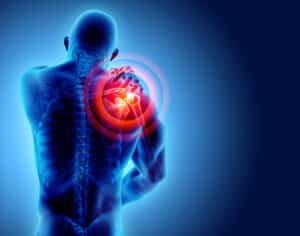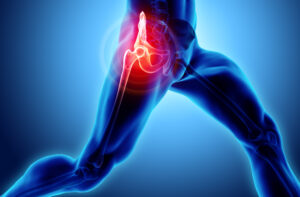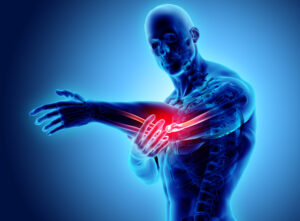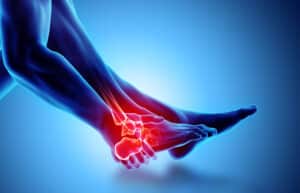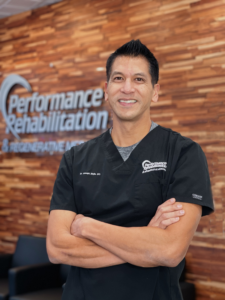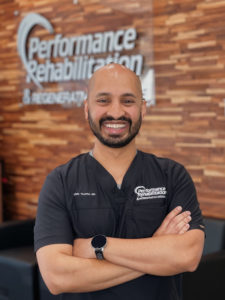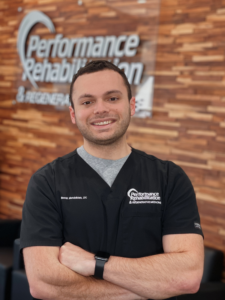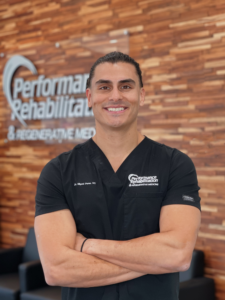The colorful landscapes and cooler days of autumn enhance the running experience. Indeed, fall is the perfect time to grab your running shoes and take a sprint around the neighborhood or a jog through the park. Adding to the fun are the many events that organizations offer to connect runners and bolster good causes.
Although the body and spirit benefit from running, the activity also includes the potential for injury, medical professionals caution. For this reason, the majority of physicians and trainers counsel preparation and education to keep runners on pace.
Running can be part of an overall fitness program to improve cardiovascular health, notes Dr. Joseph Mejia, DO, FAAPM&R, RMSK.
“The general recommendation is to get 20 to 30 minutes of moderate exercise at least three times a week. Of course, everyone starts at different levels … so that’s a goal someone can build up to. New runners frequently start with a walk-run and increase activity from there,” said Dr. Mejia, medical director at the Watchung office of Performance Rehabilitation.
Runners new to the sport may want to get clearance from their primary physician, Dr. Mejia cautioned, suggesting an annual physical with an EKG or a cardiac workup if the patient is symptomatic or has a family history of cardiac disease. Education about correct footwear, the differences in running surfaces, stretching exercises and the effects of weather on running conditions also benefit novices.
“Running is a high impact activity. Wearing proper footwear helps to reduce the possibility of muscular-skeletal injuries, such as plantar fasciitis and Achilles tendonitis,” Dr. Mejia said. “Running injuries can also affect the knees and hips. Unlike closed kinetic chain exercises such as cycling, in which your feet are always in contact with the pedal, running is an open kinetic chain exercise in which the feet repetitively strike the road surface. Appropriate footwear promotes comfort and provides support.”
While not necessarily a result of running, foot problems such as plantar fasciitis are exacerbated by repeated impact with the ground. Another common area of injury is the ankle region. Tightness in the area where the calf muscle meets the heel often results in Achilles tendonitis. Repetitive impact can also affect hips and knees, major weight-bearing centers of the body. Hip and knee cartilage receive much wear and tear, which can cause inflammation and pain by aggravating underlying osteoarthritis.
Performance Rehabilitation treats patients who want to recover from their injuries so they can continue their running and walking activities, Dr. Mejia said.
At Performance Rehabilitation and Regenerative Medicine, doctors and therapists work with the injured patient to restore function to the injured area. Viscosupplementation injections that lubricate damaged cartilage in knees; physical therapy to strengthen muscles, ligaments and tendons; physical therapy; and regenerative medicine techniques that use the body’s natural healing properties are among the many available options.
The Performance Rehabilitation team develops a comprehensive treatment plan following a careful evaluation, which includes diagnostics including X-rays and ultrasound. New patients go through initial consultation and diagnostic testing, usually completed on-site. Following the testing, a team of specialists and support staff develops and implements a treatment plan based on objective goals.
“Our team employs numerous protocols to treat patients. Not all are suitable for every type of injury,” Dr. Mejia said. “Corticosteroids can be very effective, but the results are sometimes short-lived. In the case of Achilles tendonitis, corticosteroids can actually be counterproductive and increase the possibility of a rupture.”
Some areas of the body, such as the Achilles tendon, don’t have a good enough blood supply to enable the healing cells to reach the affected area, he explained. In such instances, Platelet Rich Plasma (PRP) can be very helpful. This process harnesses the plasma from the patient’s body, “spinning the cells down” to a concentrated level. These naturally occurring, healing patient cells are then injected into the injured area with image guidance such as ultrasound, X-ray and a needle arthroscope.
Runners who’d like to learn more about running safety or recovering from injury can contact Performance Rehabilitation at its clinics in Branchburg, Somerset and Watchung, as well as its surgical center, located on Route 22 in Bridgewater. For a complete list of services and to book an appointment, visit performancerehabnj.com.
— Stan Lemond
